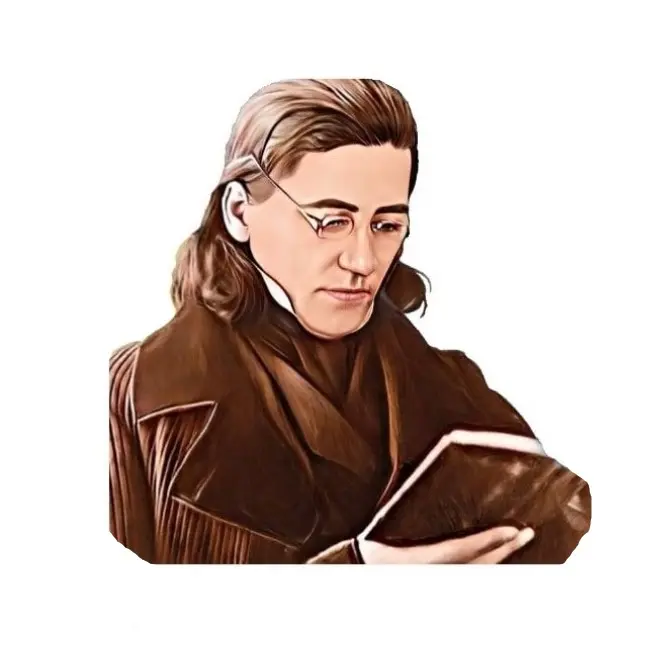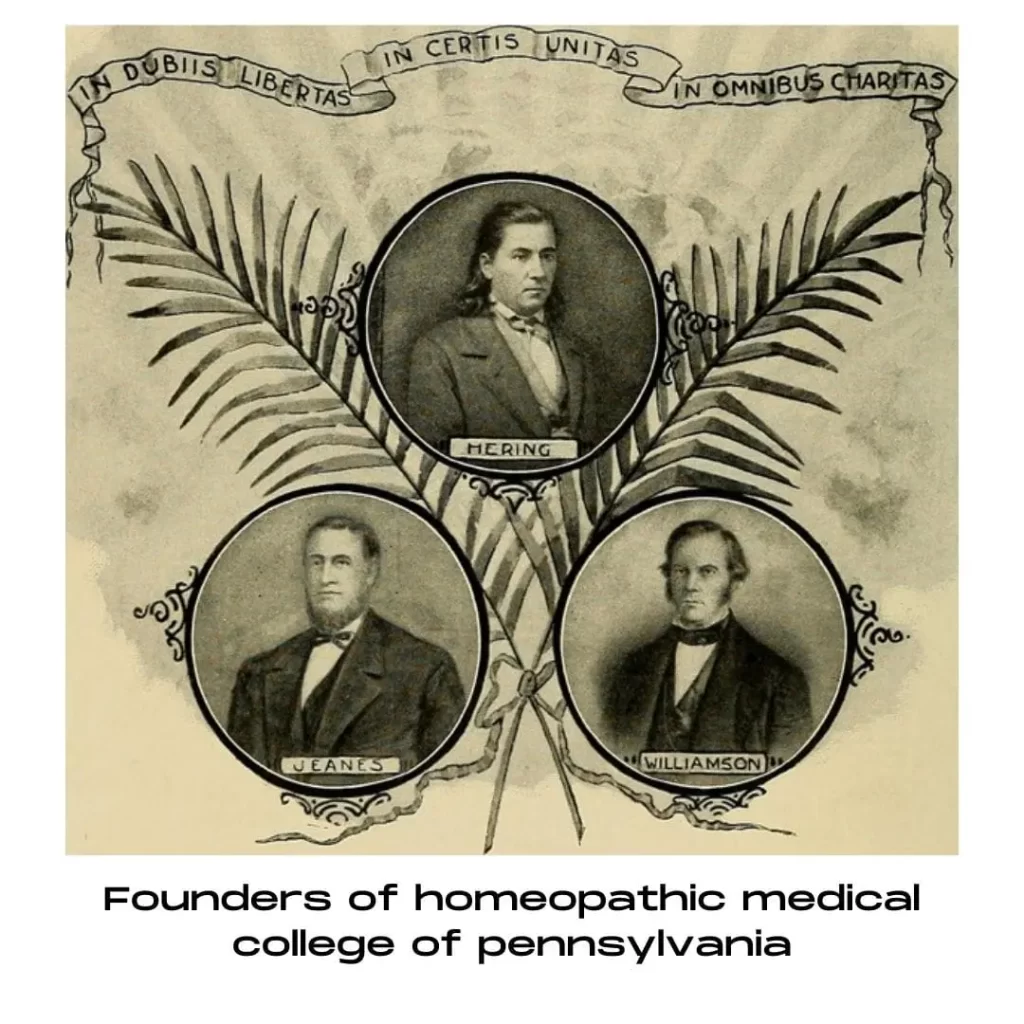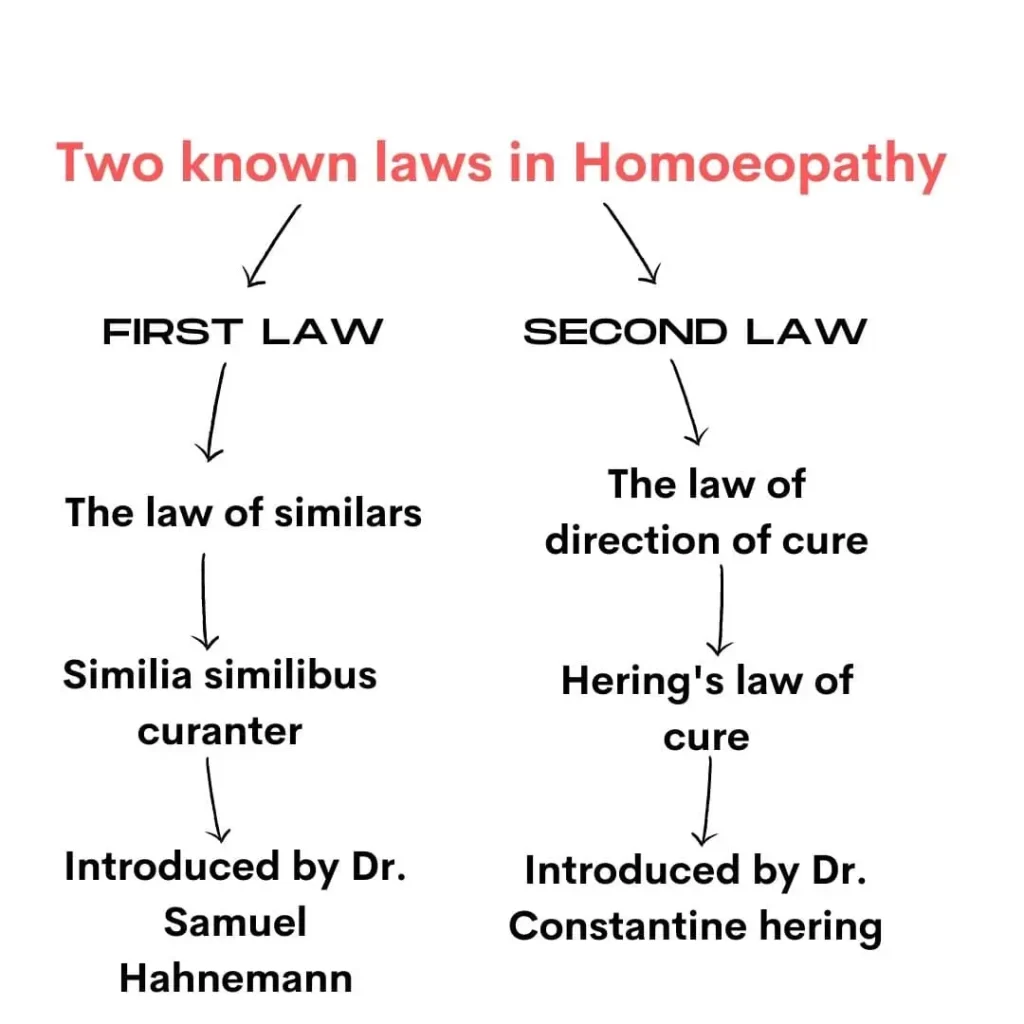
Dr. Constantine Hering who is known as the “Father of American Homoeopathy” was born on 1st of January in 1800 at Oschatz, Germany.
If you are related to Homoeopathy, you must have heard of Hering’s Law of cure or 10 huge volumes of Guiding symptoms of Materia medica or do you know who started the Decimal scale of potentization?
You might remember what are the Hering’s directions of cure, but knowing how these laws came into existence and what are the scientific explanations about them are as interesting as their importance.
Let’s begin with Dr. Hering’s journey of conversion to homoeopathy and how it led to the formulation of laws.
Table of Contents
ToggleHERING’S CONVERSION TO HOMOEOPATHY
- In 1817, at the age of 17 he found interest in medicine and joined the Surgical Academy of Dresden for 3 years.
- In 1820, he studied medicine at Leipzig University. Here he became an assistant student of medicine and favorite student of Dr. Henrich Robbi.
- Robbi was a critic of Homoeopathy and Dr. Hahnemann’s work.
This is the time when Dr. Hahnemann was an eyesore to the stalwarts of orthodox medicine as the challenge he posed to their existing medicinal system.
- In 1821, a local publisher, C. Baumgartner approached Dr. Robbi to write a book on his opinion contrary to homoeopathy in order to prove it a ‘quackery’ (dishonest medical practice). Due to lack of time Dr. Robbi referred the publisher to Dr. C Hering.
- Hering accepted the offer. He nearly finished his writings in the winter of 1822.
- But while writing he collected the literature on homoeopathy (that also included original writings of Hahnemann) in order to make quotations.
- The methodologies of drug proving and the practical aspects mentioned in Third volume of Materia Medica Pura influenced him so much that he decided to repeat the experiments (guided by Hahnemann in Materia medica) to analyze the results of drug substances.
Being a scientific person, he wanted to confirm the proving.
- He repeated the same cinchona bark experiment on himself. The result was the same as mentioned by Hahnemann. He began to sense some truth about homoeopathy. The further scientific experiments confirmed the basis of homoeopathy. Later he rejected the offer of writing a book against homoeopathy.
- In 1824, his right forefinger got infected while dissecting a dead body that rapidly became gangrenous. It was the era of medicine when such wounds were mostly fatal. His wound was not healing by orthodox medicines and was advised to have his hand amputated.
- Lucky for him, one of his friends named Kummer who happened to be a disciple of Hahnemann convinced him to take homoeopathic treatment and prescribed Arsenicum album. He felt better and Gangrene got completely healed after a few repetitions.
- Hering was greatly surprised by his own experience with homeopathic medicines. Then for further instructions he contacted Dr. Hahnemann.
- In 1826, he received M.D. degree from University of Wuerzburg with highest honors.
- He declared himself as a homoeopath in his doctoral thesis which was titled as “De Medicine Future” (The Medicine of Future).
HERING AND THE PROVING OF LACHESIS
- From the years of 1827-1833 he was sent to the Paramaribo, Suriname to conduct Botanical and Zoological research for the government of the King.
- Later king himself tried to stop Hering from publishing his homoeopathic findings.
- But Hering left his post and continued working on homoeopathic medicine at hospitals and a leper colony for the Governor of Suriname’s capital, Paramaribo.
- Hering proved Lachesis accidently while triturating the Bushmaster’s venom in his home-laboratory.
- He was looking for an improved substitute for cowpox inoculation that Edward Jenner was developing in Britain because Hering felt that it was extremely dangerous.
- He was interested and experienced with snake venom that led him to the conclusion that, “Saliva of a rabid dog, powdered smallpox scabs, venoms or any other diseased products might be prepared in the new Hahnemannian way for curing disease”.
While self-proving of higher and higher attenuations of Lachesis Hering accidently paralyzed his right side of the body.
- He stayed in Paramaribo for whole 6 years and then settled in Philadelphia in 1833.
HERING AND HOMOEOPATHY

- In 1848, three physicians Constantine Hering, Jacob Jeanes and Walter Williamson joined together to rent rooms in a building behind the Philadelphia pharmacy at 229 Arch Street.
- With 15 students and eight instructors, they established the first Homoeopathic Medical Collage in the country at Allentown, Pennsylvania.
- The school was offering M.D. and H.M.D. degrees and was the first successful center in the world for homoeopathic education.
In 1849 while cholera epidemic, many orthodox physicians and scholars were attracted towards homoeopathy due to its superior results and scientific basis of experiments.
- In 1850, the college moved to larger buildings at 1105 Filbert Street and the building at 229 Arch Street became the female Medical College of Pensylvania.
- In 1867 after withdrawing from Homoeopathic Medical college of Pennsylvania, Hering founded Hahnemann Medical College of Philadelphia at 1307 Chestnut Street.
In 1862 homoeopaths managed 110 hospitals, 145 dispensaries, more then 30 nursing homes, 60 orphan asylums and retirement homes and 16 retarded homes in the America.
Hering trained a total 3500 students in homoeopathy and along with his students he treated over 50,000 patients a year.
HERING AND HIS CONTRIBUTIONS
- Hering was the chief editor of the ‘North American Homoeopathic Journal’, The Homoeopathic News’, and ‘The Journal of the Allentown Academy’.
- He wrote many articles, monographs and books on homoeopathy.
- He wrote the ‘Domestic Physician’ and the ‘Guiding Symptoms’ that covers huge 10 volumes of Materia medica.
- He proved 72 homoeopathic remedies that includes important medicines like: Cantharis, Colchicum, Iodum, Mezerium, Sabadilla, Sabina, Psorinum, Nux moschata, Lachesis, Crotalus, Hydrophobinum, Platina, Glonoin, Fluoric acid, Phosphoric acid etc.
- Hering invented the Decimal scale of potentization.
HERING’S LAW OF CURE
Hering became one of the best homoeopathic physicians, a writer and influencer.
He gave us the law of direction of cure which is famous as “Hering’s law of cure” or “The law of direction of cure”.
In homoeopathic community, Hering’s law of cure is known as the “Second law of cure” the first law of cure is “Similia similibus curanter” or “Like cures like”.

Hering observed the consistent pattern of healing and described this pattern in the form of some basic laws.
This law concerns with the direction in which the symptoms of the patient should disappear in order to cure under the homoeopathic treatment.
According to this law in a patient who is taking homoeopathic remedy, “The cure takes place from above downwards, from within outwards, from more important organ to the less important organ and in the reverse order of the appearance of symptoms”.
On the evening of 23rd June 1880 after attending a patient’s house call Hering died on the way back due to a heart attack.
He carried a moto “The force of gentleness is great” throughout his life.
You may also like to read the Biography of Dr. James Tyler Kent.
